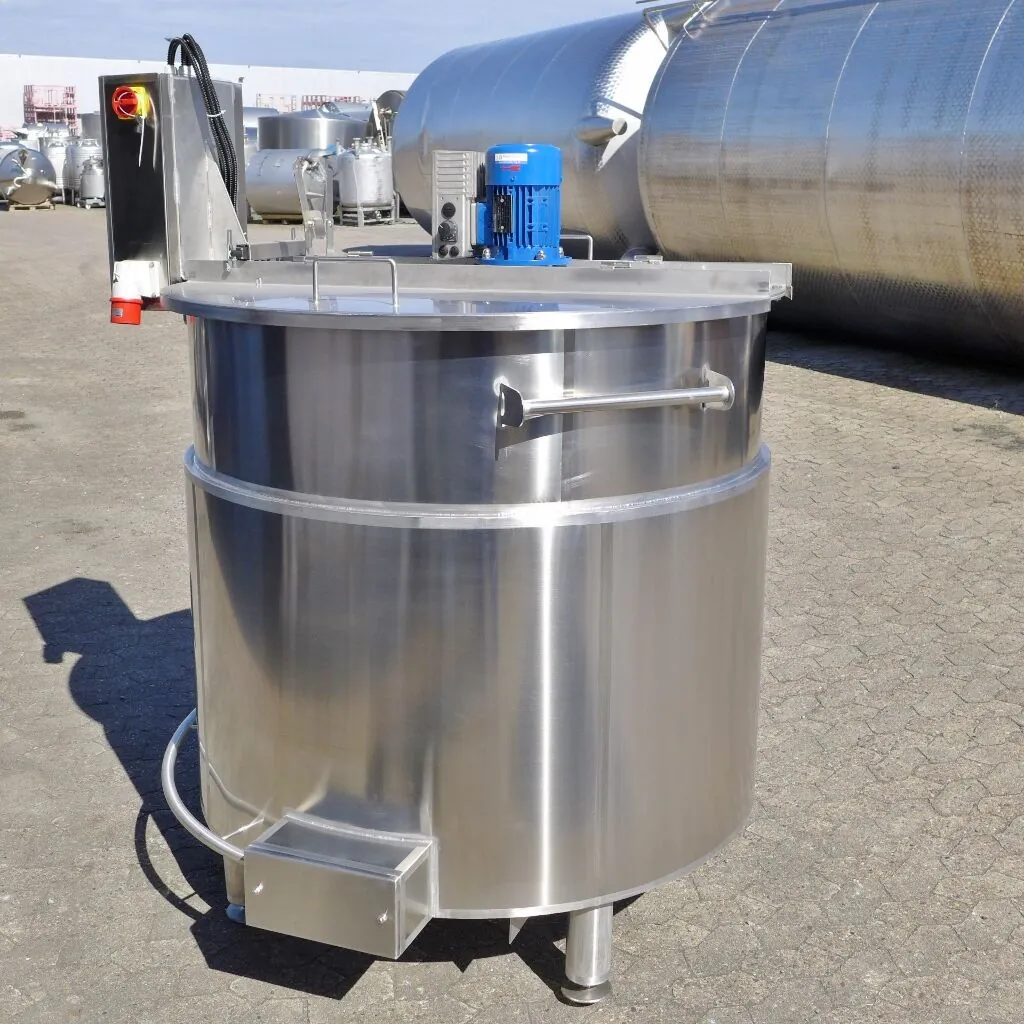
What are the advantages of electrically heated containers?
Water and steam have always been the most widely used media for controlling the temperature of stainless steel containers. This is primarily for economic and practical reasons, as cooling water, hot water and steam are available in sufficient quantities in almost all industrial plants. are available in sufficient quantities.
However, there are also areas of application and customer groups for which an electrically heated container can be very advantageous. We would like to explain some of the advantages in more detail in the following article.
Production of small batches
Customers who produce on a small scale and do not have access to existing infrastructure (steam boilers or instantaneous water heaters) are ready for production quickly and cost-effectively with an electrically heated container. Apart from the power connection, no further investment in energy generators or pipelines is required.
Low maintenance effort
Electric heating elements generally require little maintenance and can be replaced easily and inexpensively if necessary. In high-temperature applications, steam heating leads to a high required operating overpressure of the heating circuit, whereas no operating pressure is required for electrical temperature control of the double jacket using heat transfer fluid. This enables high production reliability and low downtimes due to maintenance intervals.
Fast heat-up times
Electric heating systems may allow faster heat-up times compared to other heating methods. This can contribute to a reduction in production intervals.
Higher operating temperatures
Very high operating temperatures above 200°C are only possible with steam with high investments in the infrastructure, as an extremely high operating pressure is required. With an electrically heated double jacket, temperatures of up to 350°C can be achieved almost without pressure if the right thermal oil is used for temperature control.
Environmentally friendly
If the electric heating is powered by electricity from renewable energy sources such as a photovoltaic system, the container can be operated with virtually zero emissions. As an environmentally friendly alternative to this, there is also the option of using an electric steam generator.
What options are there for heating a container electrically?
There are various options for the electrical heating of stainless steel containers, which differ according to the required heating tasks (heating, temperature maintenance, frost protection) and production requirements:
- Indirect electrical heating using heat transfer fluid:For this type of electrical heating, the tank must be designed with an unpressurized double jacket (“double-walled tank”). The double jacket is filled with a mineral or synthetic oil as a heat transfer medium. There is a wide range of heat transfer fluids to choose from, such as thermal oils or glycerine. Electrically operated heating elements installed in the double jacket heat the thermal oil to the desired temperature. The interior of the container in contact with the product is heated indirectly and gently by the heated thermal oil. The temperature in the double jacket and in the product chamber can be monitored and regulated at all times using built-in temperature sensors. In this article you will find a concrete product example of 500 and 1000 liter electrically heated mixing containers from our product range.
- Heating mats: Heating mats made of silicone and similar materials are designed to be attached to the outer wall of the container using self-adhesive foil. This type of electrical heating is therefore particularly suitable for inexpensive retrofitting to existing single-walled containers, as installation is very simple and no double jacket is required. The temperature is controlled by means of a coiled heating conductor wire integrated in the heating mat. Silicone heating mats are very temperature-resistant and can often be exposed to temperatures of up to 200°C for long periods. The product area of the container is heated indirectly and gently by the heating mat attached from the outside. The advantages of heating mats are their short heating time, flexible design, easy cleaning and simple installation. Heating mats can also be fitted with temperature sensors to allow the temperature to be controlled. Almost any stainless steel container can be retrofitted with a heating mat.
- Heating tapes:Electric heating tapes are particularly popular for maintaining the temperature or protecting large storage tanks or pipelines against frost. The heating tape is glued to the outside of the tank wall and wrapped around the cylindrical body. Installation of the heating tape is simple and with operating temperatures of approx. 80-90°C, the interior of the container in contact with the product can be kept at an indirect and gentle temperature.
- Immersion heater:An immersion heater, also known as a flange heater, heating rod or screw-in heater, is a widely used technology for direct electrical heating. The heated heating elements of the immersion heater bring the interior of the container up to temperature. As the heating elements are installed in the product chamber, this is also referred to as direct heating. This technology is easy to retrofit using a flange and is recommended for simple applications such as water temperature control. The disadvantage is the increased cleaning effort, as the heating rods can become dirty depending on the temperature and product and can only be cleaned with difficulty using conventional cleaning techniques such as CIP balls.
What options are there for heating a container electrically?
Electrically heated stainless steel containers have many advantages, as they can be heated independently and without additional infrastructure. With the right thermal oil, temperatures of up to 350°C can be easily achieved with relatively low maintenance and a fast warm-up time. For large storage tanks, heating wires can be used to maintain a gentle temperature or ensure frost protection.
Contact us today to find out more about electrically heated tanks. We manufacture bespoke electrically heated tanks and also have electrically heated tanks available from stock at all times.
